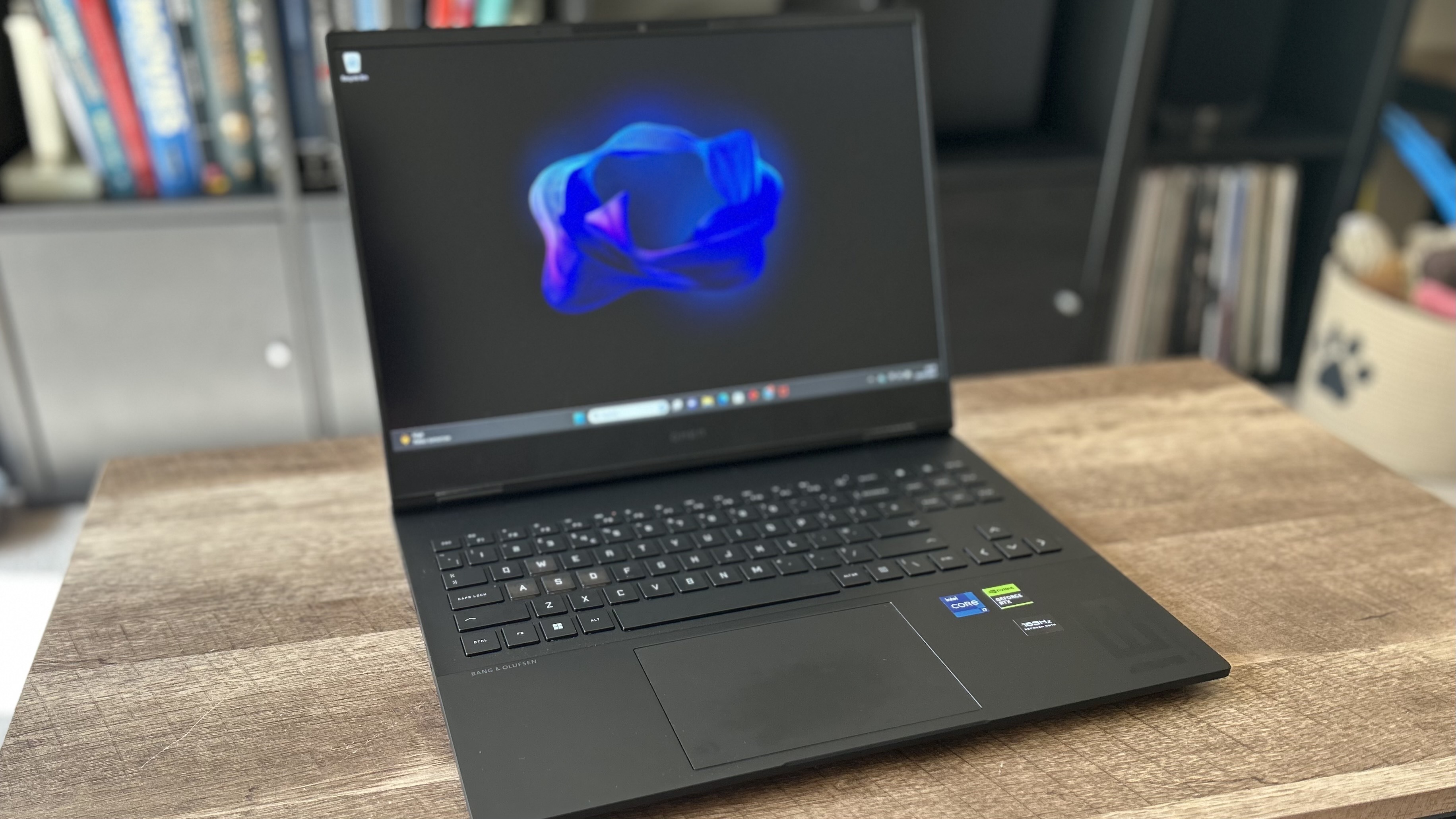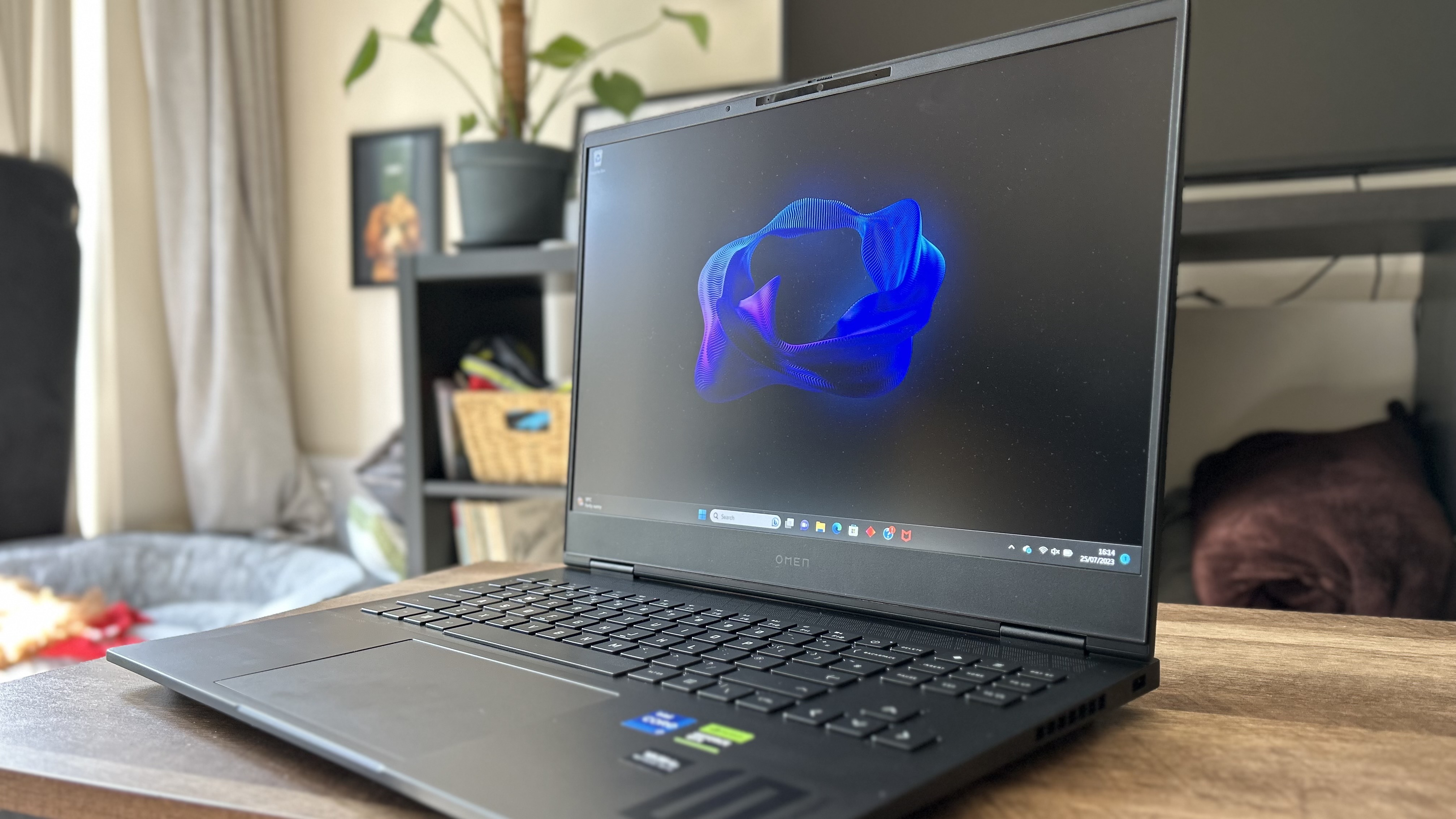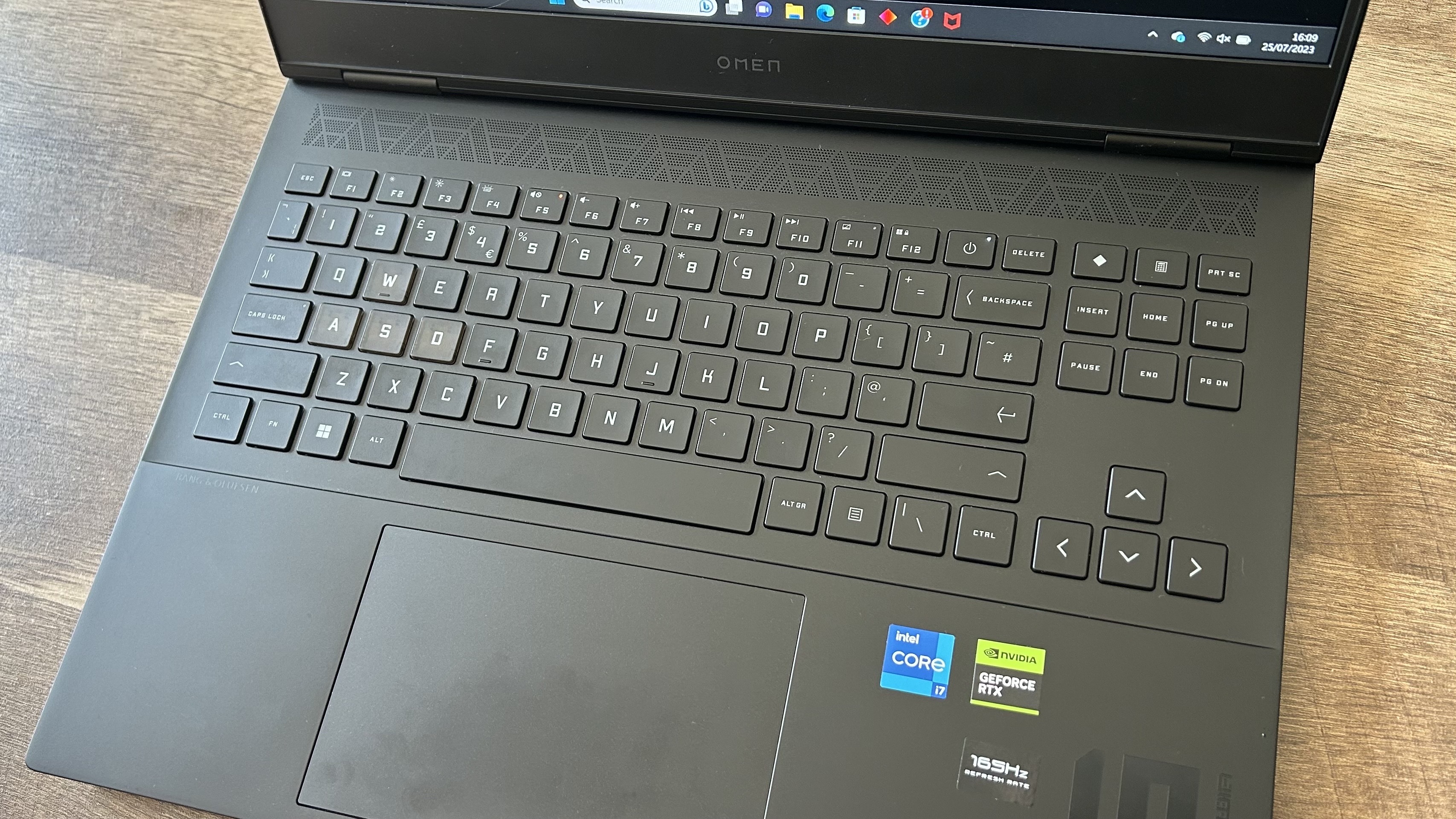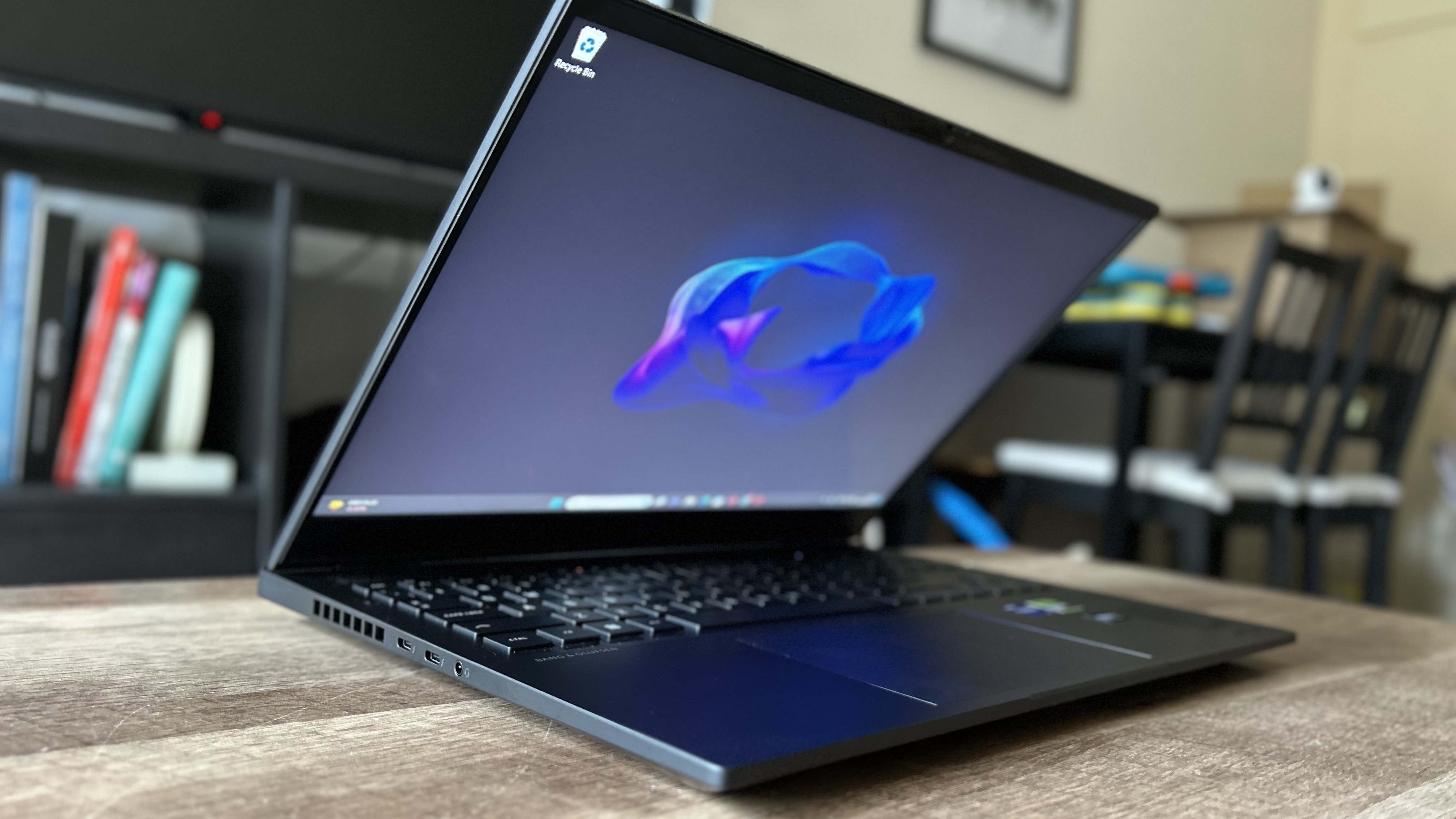
HP has struggled to really be considered alongside the big guns of gaming laptops over the last few years. Its Omen machines always seem to have been sidelined, due some design flaws and a general sluggishness when it comes to updating to new ports and protocols. My first ever gaming laptop was a GTX 1050 HP Omen and I loved it - so I've been following each new release closely since. The HP Omen Transcend is the first to truly get me excited.
This is a machine that might actually compete with some of the best gaming laptops on the market for the first time. A super slimline chassis housing some of the latest components without fans roaring in the background - and a Mini LED display to watch all the action on - HP means business this time around.
I didn't receive the top-end Mini LED Omen Transcend for review. But I was more than happy with my more realistic RTX 4060 configuration, and took it out for a spin over the course of three weeks to see exactly how well it stacks up.
Design

I have a small gaming desk that plays host to a number of gaming laptops every month, and none have fit so well as the HP Omen Transcend 16. It's got a similar footprint to nearly every other 16-inch gaming laptop I've had my hands on, but it somehow feels smaller, more compact, and certainly more portable.
This is the first time I've looked at a larger screen and wondered what trickery it was using to seem so svelt. Don't get me wrong, you're still getting the extra immersion of a 16-inch device, and plenty of this year's laptops have managed to keep close to a 15.6-inch form factor by swapping out the aspect ratio. However, there's something about this understated, super skinny matte black design that makes it feel particularly special.
So many new generation rigs are moving away from the slimline design trends of the last few years in order to boost the quality of components under the hood, so it's refreshing to see the 2.1kg Omen Transcend holding down the portable fort.

The main body itself is composed of magnesium-aluminium alloy, with some hints of plastic here and there. It also helps that the chassis itself is free from any overly gamer aesthetic choices. The lid swaps the diamond emblem of yore for a classy 'Omen' embossed logo with a subtle but impressive gloss set against the matte material. Inside you'll find a keyboard with everything but the number pad included, some smaller Omen design elements (a gray logo underneath the display and an embossed 16 just visible in the right corner).

The bezels are more pronounced than something like the Asus ROG Zephyrus G14, especially along the bottom of the display. That's my only real design gripe - and it is hard to squat a 16:10 aspect ratio screen - but even the far chunkier Alienware M16 offers more screen-to-body goodness.
The Transcend also benefits from the improved hinge design hitting certain models over the last year. The full width hinge feels sturdy under hand and can move up to 180 degrees should you need it to as well.
Features
The components available in the HP Omen Transcend 16 aren't going to light a fire under a particularly rich enthusiast, but they do cater to the vast majority of players out there. Unlike the chunkier HP Omen 16, which also received a refresh this year, the Transcend maxes out at an RTX 4070 GPU running at 130 watts of TGP. That's not going to make something like the Razer Blade 18 sweat, but it doesn't need to. This is an everyday 1080p machine at its finest, with new generation specs that certainly overpower previous models and will continue to keep up with the latest games for years to come. Of course, you can excel in other areas if you have more cash to splash.
The Omen Transcend 16 is configurable up to an Intel i9-13900HX with 32GB DDR5 5600 MHz RAM and a 2TB SSD if you're looking to push the boat out. Throw in a Mini LED 240Hz QHD+ display and you're looking at a seriously beefy (though well over $3,000 / £3,000) unit.

Our RTX 4060 test machine sits at the more affordable end of the spectrum, packing a 1920 x 1200 IPS display with a 165Hz refresh rate. Coming off the back of some seriously impressive screens (see the Asus ROG Strix Scar 16), I was surprised how easy it was to slip back into the world of 1080p (well, the 16:10 version of 1080p). That's more testament to the quality of this display than it is to the detriment of newer Mini LED panels.
Despite its weaker specs on paper, this was still an excellent screen to to stare at, with super smooth motion, excellent handling of darker lighting effects, and an impressive color range as well. The contrast and dynamics obviously aren't up to the level of a far more expensive panel, and a brighter playing environment did wash out more intricate scenes. That's only noticeable when watching these screens back to back, though. The FHD webcam sitting up top is also a welcome addition in a world plagued with 720p lenses.
Port selection is solid, with two USB-C Thunderbolt 4 options covering you for both power delivery and DisplayPort on the left and a single USB-A on the right. That's a comfortable setup for keeping your gaming laptop on a desktop, and combined with the rear port setup made for a relatively tidy, yet still easily accessible, cable situation. Running along the back you'll find the power port, HDMI 2.1, another USB-A, and an RJ45.

The keyboard offers a soft landing to each keypress that isn't going to satisfy those after a more tactile feel but certainly feels speedy and comfortable. The spacing is a little strange, and it took me a while to work out why I was suddenly all over the deck. It feels like the array of extra navigation buttons and the dedicated slot for the arrow keys on the right is pushing the main keyboard slightly too far to the left to feel truly natural to type on. After about a week of constant typo fixes, muscle memory did start to kick in and I was able to get my head around the balance and spacing issues. It also helps that the trackpad below is smooth and responsive with a snappy clack to every click.
Audio is decent, but it does sit in the higher ranges far more comfortably. Bassier experiences suffered for this slightly tinnier audio profile, so I'd still recommend using a gaming headset.
Performance
Time Spy: 9,864
Fire Strike: 21,618
PCMark10: 6,762
Cinebench R23 (Multi): 10,529
Crystal Disk Mark: 6656.79MB/s Read / 4968.78MB/s Write
The HP Omen Transcend 16 isn't going to top the framerate charts in this RTX 4060 configuration, but it does give us hope for more portable options in the future. The cooling system under the hood is working particularly hard to keep everything stable here - and while it doesn't quite do the work of a larger design, it does its job for the most part. The best bit is this is a particularly quiet machine. In fact, the Alienware M16 was louder while running a few Chrome tabs as I benchmarked the Transcend 16. Those fans were astonishingly quiet during both gameplay and everyday use.
Yes, the Alienware M16 does use its larger chassis to draw more out of the exact same processor and graphics card (hitting 10,139 in Time Spy and 23,624 in Fire Strike), but the Omen Transcend is only dropping down by between 2 and 8% in these tests and is infinitely more portable for it which is a major win. That does translate to the M16's higher framerates in in-game testing (with the exception of Hitman 3 which HP handled better), but there's still some solid numbers here with the chassis size factored in.
Three-figure framerates are the norm with new components under the hood, and the HP Omen Transcend 16 makes the most of this raw power. We managed to hit an average of 169fps in Rainbow Six Siege Extraction, for example - a stunning result from the lower mid-range card. Of course, those kinds of numbers are going to be more reliable in High settings, with Ultra dropping down to two-figures far more regularly.
Should you buy the HP Omen Transcend 16?

The HP Omen Transcend 16 may not top the performance charts, but it's certainly a must-see for anyone looking to take their gaming laptop out and about. Yes, the Asus ROG Zephyrus G14 is going to be offering up some stiff competition here, and an RTX 4060 configuration of this super portable device is available for around $400 less than the Transcend (with half the SSD but a boosted QHD resolution screen). The G14 is still our go-to for portable play, but if you don't want to sacrifice display size to get that more compact footprint, you absolutely need to be taking the HP Omen 16 Transcend seriously.
Despite its slightly reduced performance, I would also recommend the Transcend over the Alienware M16. Its significantly reduced fan noise, svelt design, and similar price point makes for a compelling case, especially considering even the cheaper 1080p IPS display looks particularly strong here.
How we tested the HP Omen Transcend 16
I used the HP Omen Transcend 16 for all daily work and play, in both a desk based setup and on the lap. During that time I was testing across Alan Wake Remastered, High on Life, Apex Legends, and The Sims 4, while also running through in-game benchmark tools across Shadow of the Tomb Raider, Total War: Three Kingdoms, Rainbow Six Extraction, Returnal, and Hitman 3. For more information on how we test gaming laptops, be sure to check out the full GamesRadar+ Hardware Policy.
For more on the competition, check out the best Asus gaming laptops and the best Alienware gaming laptops on the market. We're also rounding up all the best Razer laptops for something a little pricier as well.







